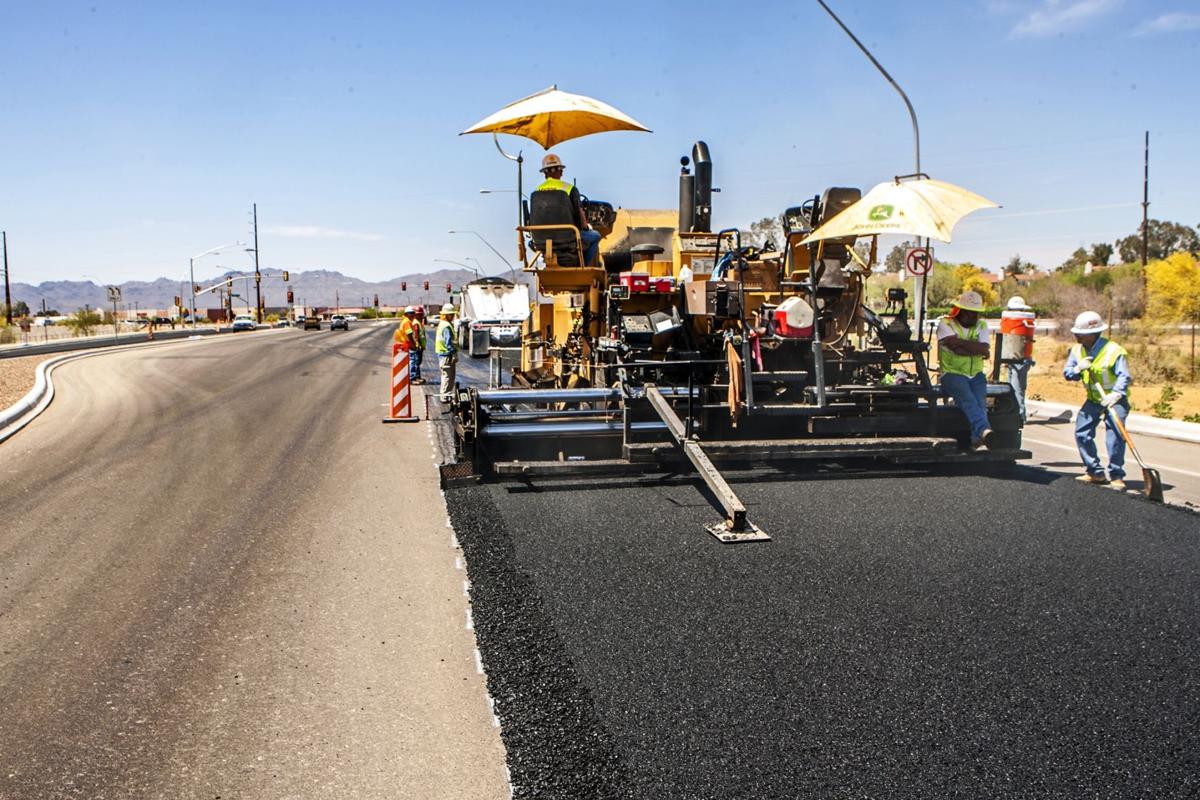When Pima County went out to bid on the Magee Road/Cortaro Farms widening in 2011, an engineer’s estimate put the expected cost of the two phases at around $39.3 million.
However, all of the bids came in well under and the sum of the winning bids from KE&G Construction and The Ashton Company was about $28 million, nearly 30 percent — and over $11 million — shy of the estimate.
While certainly one of the larger estimate-to-bid disparities over the Regional Transportation Authority’s first decade, it is hardly alone, according to data from the authority..
Over a couple dozen major roadway projects, estimates fell 17 percent short of winning bids on average, spelling tens of millions of dollars of difference. There were only a handful that underestimated costs.
At first glance, it may seem like an unmitigated good thing that project costs are coming in well under what was expected. What’s wrong with getting something for less than you thought you’d pay?
However, some area transportation officials say that frequent, significant overestimating can complicate project funding. Others say it’s not that big of a deal, especially when compared to the far more consequential issue of underestimating projects before bid day.
“The jurisdictions will typically need to have the resources to put a project out to bid,” the RTA’s Jim DeGrood told the Road Runner. “If they overestimate the amount of money that it’s going to cost to do a project, then those are funds that are tied up, that can’t be out on other projects. That’s not a good thing.”
“Consistent overestimation harms the region’s delivery of projects by unnecessarily committing funds to a project that may be used on other projects,” is how a recent RTA policy described the matter.
Obviously once a project is finished, unused funds are freed up for other work, but that can sometimes take quite a while. During that time, pots of potential dollars for road work can feel skimpier than they may actually be.
There are likely lots of factors behind the sustained sizable overestimating. Part of it is what DeGrood, as well as Tucson transportation Director Daryl Cole, described as the instinctive conservatism of the firms doing the estimating, who very much want to avoid underestimating. After all, if winning bids come in over estimates, that means officials scrambling for extra dollars, or possibly even rebidding projects, which is a tricky proposition once all the contractors have laid their cards on the table.
But there are also larger macro factors behind overestimation, especially the echoes of the Great Recession, according to DeGrood and Cole. With not a lot of projects to go around in the years after the crash, bidding wars between firms hungry for work have driven construction costs down. But as DeGrood pointed out, the phenomenon is still seen in recent bids. Indeed, the four 2016 bids included in the RTA data show a higher average overestimation — over 25 percent — nearly a decade after global credit markets first froze.
DeGrood says there are some signs that the construction industry is picking up, which could mean bids start creeping upward. Nevertheless, he thinks steps can be taken to get tighter estimate-bid spreads. Among those measures, he suggested that less important elements of projects could be included as add alternates. That means they would only be done if the project is coming in under budget.
Whatever is done, tighter spreads are possible. For example, ADOT’s Phoenix District averaged 4.2 percent bid overestimation in 2010 and 1.3 percent in 2015, according to a 2016 state audit of the Maricopa Association of Government’s Regional Transportation Plan.
But Cole is skeptical that consistently high estimates are a big concern, and thinks that they can even be “a good thing.”
It’s obviously preferable for engineer’s estimates to be “right on the money,” he said, but overestimates can provide a safety cushion of sorts when unforeseen problems come up during a project, as they often do. He cited an ongoing city effort in which a basement was discovered in the right-of-way, requiring additional — and unanticipated — work and expenses.
As to funds that may get held up in projects, Cole said as soon as projects are finished, the extra capacity — “not real dollars,” he clarified — is released to the later stages.
“If I’m going to be on one side of that benchmark, I want to be on that side,” he said of high engineer’s estimates, adding later that coming in under winning bids is “much worse for the public, and industry.”





